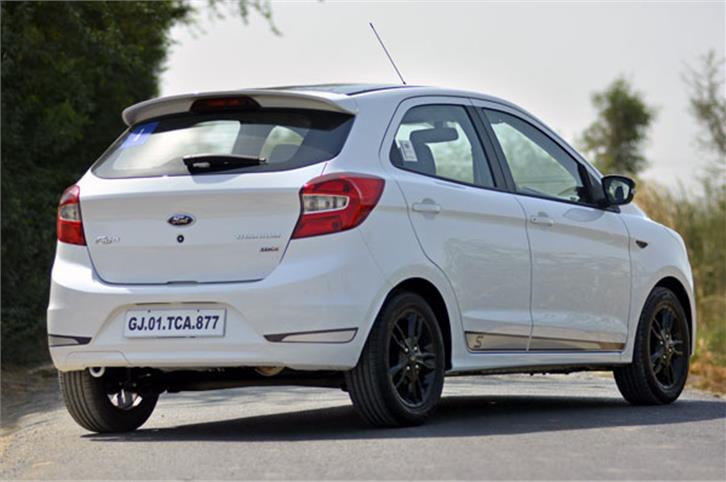2017 Ford Figo S review, test drive
The Figo Sports Edition gets a few cosmetic changes and a reworked suspension to make it more exciting. Does it have what it takes to win back the crowd?
Published on Apr 17, 2017 04:41:00 PM
1,64,042 Views
Follow us on



What’s it like to drive?
Ford is offering the Sports Edition with the 1.5-litre, four-cylinder diesel engine that produces 100hp and 215Nm of torque, and the 1.2-litre, four-cylinder petrol engine that makes 88hp and 112Nm of torque. Both engines are mated to a five-speed manual transmission. There is no automatic version on offer.
We got to sample the 1.5-litre diesel version and, as ever, the engine impressed. It's responsive right from the word go and boost kicks in from as low as 1,600rpm. There’s a mild surge thereon, until a little over 4,000rpm after which power delivery begins to taper. Still, the motor will rev until its redline of 5,000rpm, with it getting more vocal and coarse-sounding at higher revs. The car has gained 14 kilos on account of the bigger wheels, chunkier tyres and roof spoiler. But its lightweight construction translates into an impressive 95hp/ton power to weight ratio; almost identical to the more expensive Polo GT TDI’s, making this one of the fastest mass-market diesel hatchbacks around. As a result of the added weight, claimed fuel efficiency has dipped by 1.5kpl to 24.29kpl, compared to the regular car’s 25.83kpl.
Enthusiasts will remember the Fiesta S and its razor-sharp handling that were a result of its reworked suspension. We’re happy to report the Figo Sports Edition comes with some suspension tweaks of its own to improve the handling. For starters, there’s a beefier anti-roll bar in the front which does result in a sharper turn-in and good mechanical grip in the front end. Then, there are the coil springs that have been re-engineered to make the car more chuckable. Push hard and turn into a sharp corner and the tail end will step out too – but just enough to keep things exciting and not suggest a loss of control.
The fatter 195mm tyres have made a difference too. The steering feel has improved a bit and grip levels around bends are better now. In fact, the wider tyres also keep a check on any unnecessary wheelspin under hard acceleration and help put the power down in a nicer way compared to the regular car’s 175mm rubber.
There is some degree of roll, but the Ford engineers we spoke to said it was essential to find a suspension compromise that balances sportiness and everyday usability. And it must be said, the Figo S has a very comfy ride. It remains flat and composed out on the highway, and absorbs bumps within the city really well. The brakes are perfect with the pedal offering just the right amount of feel and bite.
The clutch, however, is a bit on the heavier side and its release action is a bit springy. It does take a bit of getting used to, to drive smoothly. The five-speed manual gearbox isn’t very smooth, rather it feels a bit rubbery; the gates are well-defined though.
Copyright (c) Autocar India. All rights reserved.





Comments
Member Login
Personal Details
No comments yet. Be the first to comment.